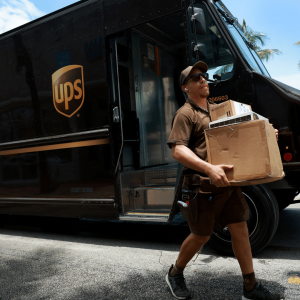Blackberry
In the late 2000s, Blackberry was one of the most popular consumer and corporate phone brands in the world. With a 20% share of the phone market, Blackberry was making gains across the industry. And yet, in 2016 Blackberry announced its departure from the mobile phone industry, with a share of 0.0% and just 200,000 or so phones still in the market.
To understand what happened to Blackberry, it’s important to look at how Blackberry conducted its business, marketed its products and developed its phones. While this article looks at larger businesses, SMEs can apply the same lessons and ideas to their own businesses.

Overview
Some of Blackberry’s very first devices were two-way pagers, released in monochrome with a full keyboard and a series of business enterprise applications. This series of first releases, in effect, set the tone for what Blackberry wanted their phones to do. In direct opposition to the commercial and civilian-first phones we see today, Blackberry focused on business.
Blackberry was making phones with corporations as their target audience. They focused on implementing secure communications, providing a keyboard for easy and quick typing and hosted a messaging service through their own servers. The ability to send and receive emails on a mobile device was considered ground-breaking and was an integral feature of their phones.
Numerous iterations were developed throughout the years leading up to 2009, always focusing on providing business features, keeping the keyboard and offering a selection of different design choices. Blackberry was building on the success of its earlier designs, incorporating and improving the features that made them successful while continuing to innovate.
Looking at their product line from 1999 up to 2009 offers a clear insight into the direction that Blackberry was taking the business, with clear favouritism in business designs and features.

The challenge
In 2007, both the iPhone and Android operating system were released to the public. Touch-screen technology became synonymous with modern technology. They also gave users access to hundreds of applications on their phones and were widely considered more technologically advanced than Blackberry models.
While BBM may have set the foundation for communication on mobile devices, it was quickly overshadowed by devices with their own systems.
Blackberry began to lose its share in the phone market. From 2009 onwards, Blackberry first attempted to stick to their roots and then change to follow market trends. Its phones became slimmer and more in line with the designs of other brands. It wasn’t until 2013 that it released its first smartphone, at which pointe it was already several generations behind its competitors, and the phone was a flop.
By the time they had decided to follow market trends and target a more commercial audience, they had missed the opportunity to build on their previous successes and technologies and completely lost their share of the phone market.
Lessons for SMEs
When the iPhone and Android system released onto the market, they were recognised as industry-defining technologies. They quickly garnered a huge portion of the phone market, which persists to this day. Blackberry failed to anticipate this new technology, failed to implement it into their own devices and failed to follow consumer demand, which was strongly in favour of it.

By monitoring changing market conditions and demands and developing and researching new technologies, SMEs can build resilience and become flexible enough to anticipate these problems. While new technologies can disrupt industries, developing them can offer a new business a huge advantage over its competitors. Quickly implementing a competitors technology can have the same effect, or help an organisation stay competitive.
Target Integration offers expert-led digital transformations for companies across all industries, tailouring our solutions around your problems.
Lego
Overview
For almost 90 years, Lego has been one of the foremost toy makers in the industry. With current profits of 64.6 billion Danish Krone (DKK), Lego is a global industry leader, constantly developing and growing its business. By expanding into new markets and industries, such as movie production, Lego reinforces its brand and reaches new customers outside of their core toymaking business.

The challenge
In 2017, Lego experienced its first drop in sales in more than a decade. Its operating profit dropped by 17%, a difference of DKK 2 billion compared to the year before. For several years before this, Lego had massively invested in growth, onboarding new employees and releasing new product lines. This expansion led to an over-saturation of European and US markets, leading to too much supply with too little demand.
This over-supply meant that Lego was unable to sell its products, impacting heavily on its overall revenue and operating costs. While Lego’s products were selling, they were creating too much and investing too much money into the additional product. Warehousing costs added an additional strain to the company.
Lego had over-extended and over-saturated its resources, leading to dramatic losses for the company.
The solution
In order to combat over-extension, Lego decided to halt expansion and re-size the organisation. In the words of the chairman Jørgen Vig Knudstorp, “we have pressed the reset-button for the entire group”. By the end of 2017, Lego had let go almost 2000 employees.
While they had solved their over-expansion problem, Lego still faced the problem of an overly saturated market.

In previous years, Lego had focused on growing and developing its Western markets, but after re-sizing the organisation, a decision was made to expand east into Asia. Asia offered huge potential, with a larger population and a growing middle class for Lego to target.
In 2018, Lego returned to profitability with an increase of 4% over the previous year and by 6% the following year.
Then as now, Lego has become hugely popular in China, opening its third-largest global factory in Jiaxing, and recently, a new $1billion factory in Vietnam. This new revenue stream has seen Lego return to profitability and continue to develop and expand its products.

Lessons for SME
Lego over-extended and relied too heavily on Western markets in the US and Europe. When supply overcame demand, these challenges led to a drastic drop in profits for the company.
Diversification is key for an SME. Relying too much on one income stream opens it up to risk from unforeseen events, such as a pandemic, or even a tropical storm.
For many organsiations, digitalisation is a mechanism by which they can reach new markets and customers, simultaneously increasing revenue streams while reducing dependency on a specific market. An SME with a diverse consumer base is more likely to withstand any one event, due to its varied income sources.
It’s important for companies to frequently assess their supply and demand, ideally ensuring that the balance is always tipped towards greater demand. By collecting and analysing data, such as through business management services, SMEs can correctly anticipate the amount of product required and prepare for the future, while ensuring they have the resources to maintain their business.
UPS
UPS is a massive, worldwide package, postal delivery and logistics service. Originating in the US, it delivers millions of items each week to customers all over the globe. Sending out such a large amount of materials to new customers and locations each week demands an incredibly intricate supply network, with supply, logistics and data centres tracking and recording each delivery as it’s made.

Overview
A logistics business such as UPS has to account for shipping, air freight and local deliveries on an international scale. The company heavily relied upon its employees to sort packages, ensure they were packaged correctly and sent to the right destination. All of this was a major burden on resources, requiring a huge amount of scanning, double-checking and due-diligence.
Challenges
UPS’ big issue was scaling. With every new depot, UPS faced further problems in cataloguing, tracking and reporting packages and performance. More and more administrative work was required simply to maintain productivity levels, while every increase in its business led to more confusion. While ‘confusion’ may not seem that large of a problem, miscommunications, mislabeling and simply not knowing what’s going on within a business can cost organisations dearly through ineffective and inefficient procedures.
As an organisation’s customer-facing processes grow, its internal must be robust enough to handle the additional strain. The huge amount of data that UPS was dealing with was a threat to their ability to scale and develop as an organisation.

The Solution
In 2018, UPS announced a $20 billion investment into data centres, logistics and e-commerce. The vast majority of this went to funding data and logistic centres, with the purpose of collecting data and automating procedures. This investment in automation and data resulted in less time spent on mundane tasks and detailed knowledge of the business.
With a clearer understanding of how its business was operating, UPS was in a position to track up to 2 million packages leaving its warehouses every day. Bloomberg reports an annual saving of $1 billion per year because of the transformation.
Lessons for SMEs
Many scaling SMEs face the same challenges. While pen and paper or legacy software may have worked perfectly well in the past, for a rapidly growing organisation it is soon found wonting. Soon, companies can end up spending more time and money trying to keep track of their own operations than they make in revenue. Putting in place the right systems and processes to future-poof your growth is critical.
For an SME, this means implementing business management services, such as an ERP or a CRM. These solutions improve interdepartmental communication, streamline operations, centralise collect data and automate routine tasks. They can save an SME thousands of hours of wasted effort every month, as well as reducing costs and improving productivity.
With all that data in one place, SMEs can make more informed decisions, to interpret supply and demand, helping them to prepare for the present and plan for the future.With a solid infrastructure in place, SMEs can react quickly and effectively to take advantage of any opportunity.



